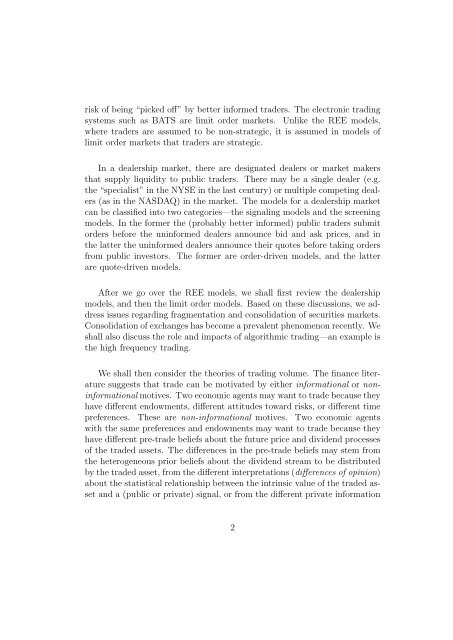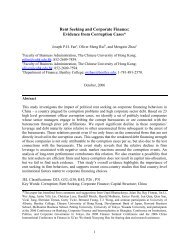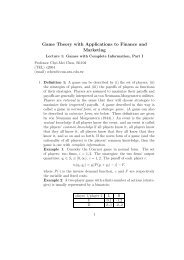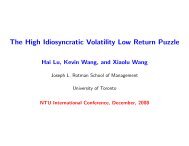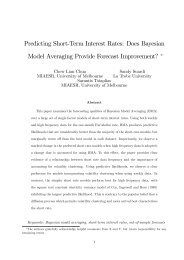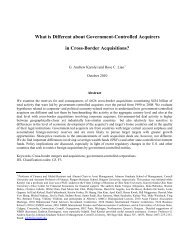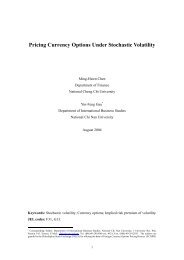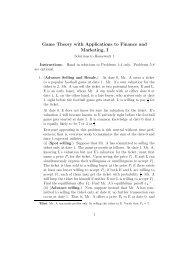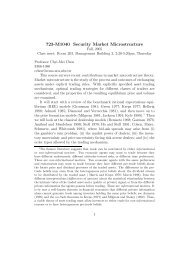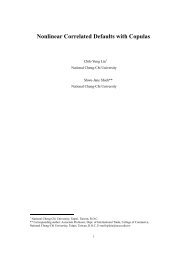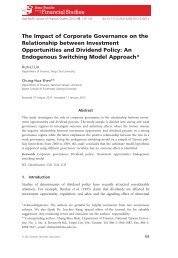723-M1040 Security Market Microstructure
723-M1040 Security Market Microstructure
723-M1040 Security Market Microstructure
Create successful ePaper yourself
Turn your PDF publications into a flip-book with our unique Google optimized e-Paper software.
isk of being “picked off” by better informed traders. The electronic trading<br />
systems such as BATS are limit order markets. Unlike the REE models,<br />
where traders are assumed to be non-strategic, it is assumed in models of<br />
limit order markets that traders are strategic.<br />
In a dealership market, there are designated dealers or market makers<br />
that supply liquidity to public traders. There may be a single dealer (e.g.<br />
the “specialist” in the NYSE in the last century) or multiple competing dealers<br />
(as in the NASDAQ) in the market. The models for a dealership market<br />
can be classified into two categories—the signaling models and the screening<br />
models. In the former the (probably better informed) public traders submit<br />
orders before the uninformed dealers announce bid and ask prices, and in<br />
the latter the uninformed dealers announce their quotes before taking orders<br />
from public investors. The former are order-driven models, and the latter<br />
are quote-driven models.<br />
After we go over the REE models, we shall first review the dealership<br />
models, and then the limit order models. Based on these discussions, we address<br />
issues regarding fragmentation and consolidation of securities markets.<br />
Consolidation of exchanges has become a prevalent phenomenon recently. We<br />
shall also discuss the role and impacts of algorithmic trading—an example is<br />
the high frequency trading.<br />
We shall then consider the theories of trading volume. The finance literature<br />
suggests that trade can be motivated by either informational or noninformational<br />
motives. Two economic agents may want to trade because they<br />
have different endowments, different attitudes toward risks, or different time<br />
preferences. These are non-informational motives. Two economic agents<br />
with the same preferences and endowments may want to trade because they<br />
have different pre-trade beliefs about the future price and dividend processes<br />
of the traded assets. The differences in the pre-trade beliefs may stem from<br />
the heterogeneous prior beliefs about the dividend stream to be distributed<br />
by the traded asset, from the different interpretations (differences of opinion)<br />
about the statistical relationship between the intrinsic value of the traded asset<br />
and a (public or private) signal, or from the different private information<br />
2


